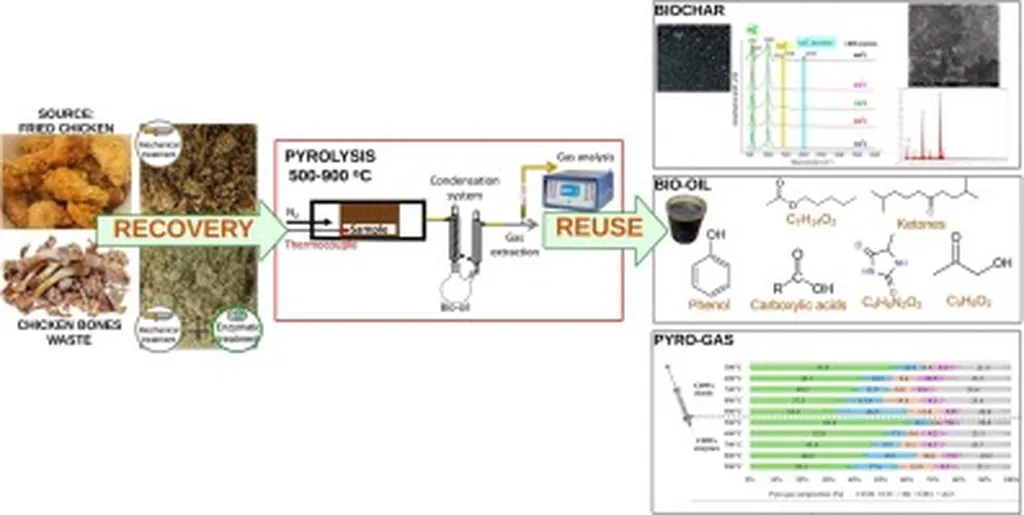In a groundbreaking study published in *Discover Chemistry*, researchers have transformed chicken bone waste into a high-performance activated carbon, offering a sustainable solution for removing harmful organophosphorus pesticides from water. This innovation not only addresses environmental pollution but also presents a cost-effective method for agricultural waste management.
The research, led by Sarifah Supri from the Faculty of Sustainable Agriculture at Universiti Malaysia Sabah, demonstrates the potential of chicken bone waste to be converted into activated carbon (CBAC) through a process involving potassium hydroxide (KOH) activation at 800°C. The resulting material boasts a remarkable surface area of 1,154 m²/g and a total pore volume of 0.89 cm³/g, making it highly effective for adsorption.
“Our study highlights the dual benefits of waste valorization and environmental remediation,” Supri explained. “By converting agricultural waste into a high-performance adsorbent, we are not only reducing waste but also providing a sustainable solution for water treatment.”
The adsorption experiments revealed that CBAC can remove malathion, a common organophosphorus pesticide, with an impressive efficiency of 96.4% at an optimal pH of 6.0. The maximum adsorption capacity was found to be 84.03 mg/g, indicating its potential for large-scale application in water treatment.
The research also delved into the adsorption kinetics and mechanisms, finding that the process follows the Langmuir isotherm and pseudo-second-order kinetics. This suggests a multi-stage adsorption mechanism involving both surface interaction and pore diffusion. Comparative tests further demonstrated that CBAC outperforms commercial activated carbon, making it a promising candidate for industrial applications.
From a commercial perspective, this innovation could significantly impact the agriculture sector by providing a low-cost and sustainable method for pesticide remediation. The preliminary cost estimation suggests that producing CBAC from chicken bone waste is economically feasible, supporting its potential for large-scale adoption.
“This research opens up new avenues for sustainable water treatment and waste management in the agriculture sector,” Supri noted. “It aligns with the principles of a circular bioeconomy, where waste is transformed into valuable resources.”
The study’s findings could shape future developments in the field of sustainable agriculture and environmental remediation. By valorizing agricultural waste into high-performance adsorbents, researchers are paving the way for more efficient and eco-friendly solutions to water pollution. This approach not only addresses immediate environmental concerns but also contributes to long-term sustainability goals.
As the agriculture sector continues to grapple with the challenges of waste management and environmental pollution, innovations like CBAC offer a glimmer of hope. By turning waste into a resource, researchers are demonstrating that sustainability and economic viability can go hand in hand, ultimately benefiting both the environment and the agricultural industry.

